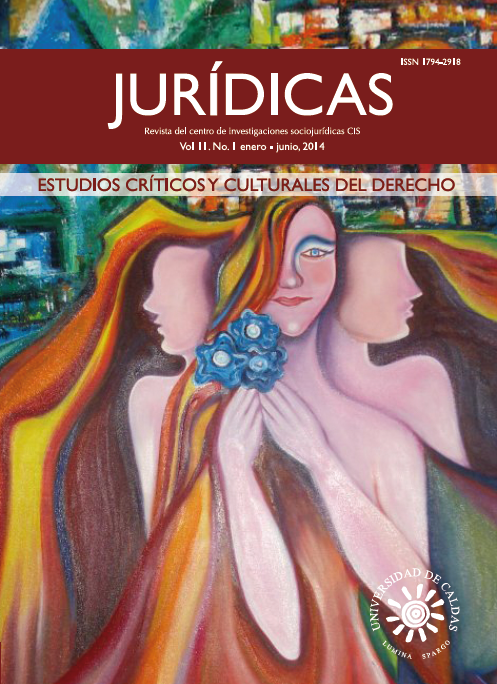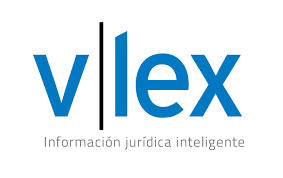Authors
Abstract
The modern idea of Constitution is related to specific cultural trends of tradition and revolution. In this sense, within the study of compared constitutional Law references to the American institutional system are common because its contributions to both, contemporary constitutionalism and the notion of modern written Constitution. The constitutional reform, in consequence, emerges as an object of interest. However, it should be noted that being a law-constitutional system – this is to say where the court interpretations about the Constitution prevail over the constitutional text itself –, then there will be a need to study the Supreme Court decisions regarding constitutional reform. And the High Court has ruled on rare occasions, always upholding the reforms validity and showing deference to the reforming power. But, since the North American institutional system comprises 50 States with their respective constitutions, it is relevant also to review State courtdecisions related to constitutional reforms at that level. In contrast with federal pronouncements, the State courts have insisted on an intense judicial activism, which has resulted in control both formal and material.
References
Amar, A. (1988). “Philadelphia Revisited: Amending the Constitution outside Article V”. University of Chicago Law Review. Vol. 55. University of Chicago.
Bickel, A. (1986). The Least Dangerous Branch. New Haven: Yale University Press.
Brennan, W. (1985). “The Constitution of the United States: Contemporary Ratification”. The South Texas Law, Review. Vol. 27. South Texas College of Law.
Carbonell, M. (1998). Constitución, Reforma Constitucional y Fuentes del Derecho. México D.F.: UNAM.
Dellinger, W. (1983). “The Legitimacy of Constitutional Change: Rethinking the Amendment Process”. Harvard Law Review. Vol. 97. Harvard University.
Denning, B. (1998). “Means to Amend: Theories of Constitutional Change”. Tennessee Law Review. Vol. 65. The University of Tennessee.
De Vega, P. (1985). La Reforma Constitucional y la problemática del Poder Constituyente. Madrid: Tecnos.
Dinan, J. (2012). “State Constitutions and American Political Development”. En: Tarr, A. y Burgess, M. (eds.). Constitutional dynamics in Federal Systems. Montreal: McGill-Queen’s University Press.
Ely, J. (1980). Democracy and Distrust. Cambridge: Harvard University Press.
Eule, J. (1989-1990). “Judicial Review of Direct Democracy”. Yale Law Journal. Vol. 99. Yale University.
Gant, S. (1997-1998). “Judicial Supremacy and Non-judicial Interpretation of the Constitution”. Hastings Constitutional Law Quarterly. Vol. 24. University of California-Hastings College of Law.
García de Enterría, E. (2006). La Constitución como Norma y el Tribunal Constitucional. Madrid: Thomson-Civitas.
Hensel, S. (2012). “Constitutional Cultures in the Atlantic World during the Age of Revolutions”. En: Hensel, S. y Bock, U. (eds.). Constitutional Cultures: On the Concept and Representation of Constitutions in the Atlantic World. Newcastle: Cambridge Scholars Publishing.
Hernández Valle, R. (1993). “El Poder Constituyente Derivado y los Límites Jurídicos al Poder de Reforma Constitucional”. Revista Española de Derecho Constitucional. No. 37.
Hughes, C. (1908). Addresses and Papers of Charles Evans Hughes, Governor of New York 1906-1908. New York: Putman’s Sons.
Jiménez Asencio, R. (2005). El Constitucionalismo. Madrid: Marcial Pons.
Kay, R. (1998). “American Constitutionalism”. En: Alexander, L. (ed.). Constitutionalism: Philosophical Foundations. Cambridge: Cambridge University Press.
Komesar, N. (1986-1987). “Back to the Future: An Institutional view of making and interpreting Constitutions. Northwestern University Law Review. Vol. 81. Northwestern University.
Kyvig, D. (1996). Explicit and Authentic Acts: Amending the U.S. Constitution, 1776-1995. Lawrence: University Press of Kansas.
________. (2000). “Arranging for Amendment: Unintended Outcomes of Constitutional Design”. En: Kyvig, D. (ed.). Unintended Outcomes of Constitutional Amendment. Athens: University of Georgia Press.
Levinson, S. (2012). Framed: America’s Fifty One Constitutions and the Crisis of Governance. New York: Oxford University Press.
Llewellyn, K. (1934). “The Constitution as an Institution”. Columbia Law Review. No. 1, Vol. 34. Columbia University.
Lutz, D. (1996). “Patterns in the Amending of American State Constitutions”. En: Tarr, A. (ed.). Constitutional Politics in the States. Westport: Greenwood Press.
Mazzone, J. (2004-2005). “Unamendments”. Iowa Law Review. Vol. 90. University of Iowa.
Murphy, W. (1978). “The Art of Constitutional Interpretation”. En: Harmon, J. (ed.). Essays on the Constitution of the United States. Port Washington: National University Publications.
________. (1989). The Nature of the American Constitution. Urbana-Champaign: Department of Political Science-University of Illinois.
________. (2007). Constitutional Democracy: Creating and Maintaining a Just Political Order. Baltimore: The Johns Hopkins University Press.
Pérez Royo, J. (1987). La Reforma de la Constitución. Madrid: Congreso de los Diputados.
Ramírez Cleves, G. (2003). Los Límites a la Reforma Constitucional y las Garantías-Límites del Poder Constituyente. Bogotá: Universidad Externado.
Row, D. (1990-1991). “When Words mean what they we believe that say: the case of Article V”. Iowa Law Review. Vol. 76. University of Iowa.
Smith, J. (1995). The Republic of Letters: The Correspondence between Thomas Jefferson and James Madison 1776-1826. New York: Northon and Company.
Strauss, D. (2010). The Living Constitution. Oxford: Oxford University Press.
Tarr, A. (1998). Understanding State Constitutions. Princeton: Princeton University Press.
________. (2006). “Introduction”. En: Tarr, A. y Williams, R. (eds.). State Constitutions for the twenty-first Century. Albany: State University of New York Press.
Tribe, L. (1983). “A Constitution we are Amending: In defense of a restrained Judicial Role”. Harvard Law Review. Vol. 97. Harvard University.
________. (2008). The Invisible Constitution. New York: Oxford University Press.
Tushnet, M. (1999). Taking the Constitution away from the Courts. Princeton: Princeton University Press.
________. (2009). The Constitution of the United States of America: A contextual analysis. Portland: Hart Publishing.
Van Alstyne, W. (1987). “The Idea of Constitution as Hard Law”. Journal of Legal Education. Vol. 37. Southwestern Law School.
Vile, J. (2013). “Constitutional Revision in the United States of America”. En: Contiades, X. (ed.). Engineering Constitutional Change: A Comparative Perspective. New York: Routledge.
Vorlander, H. (2012). “What is a Constitutional Culture?”. En: Hensel, S. y Bock, U. (eds.). Constitutional Cultures: On the Concept and Representation of Constitutions in the Atlantic World. Newcastle: Cambridge Scholars Publishing.
Jurisprudencia Estatal
Livermore v. Waite, 36 P. 424 (1894).
McCullers v. Williamson, 144 S.E.2d 911 (1965).
Adams v. Gunter, 238 So.2d 824 (1970).
Amador v. State Board of Equalization, 583 P.2d 1281 (1978).
Bess v. Ulmer, 985 P.2d 979 (1999).
Jurisprudencia Federal
Marbury v. Madison, 5 U.S. 137 (1803).
Hawke v. Smith, 253 U.S. 221 (1920).
Dillon v. Gloss 256 U.S. 368 (1921).
United States v. Sprague 282 U.S. 716 (1931).
Coleman v. Miller 307 U.S. 433 (1939).
Cooper v. Aaron, 358 U.S. 1 (1958).

 PDF (Español)
PDF (Español)
 FLIP
FLIP





















